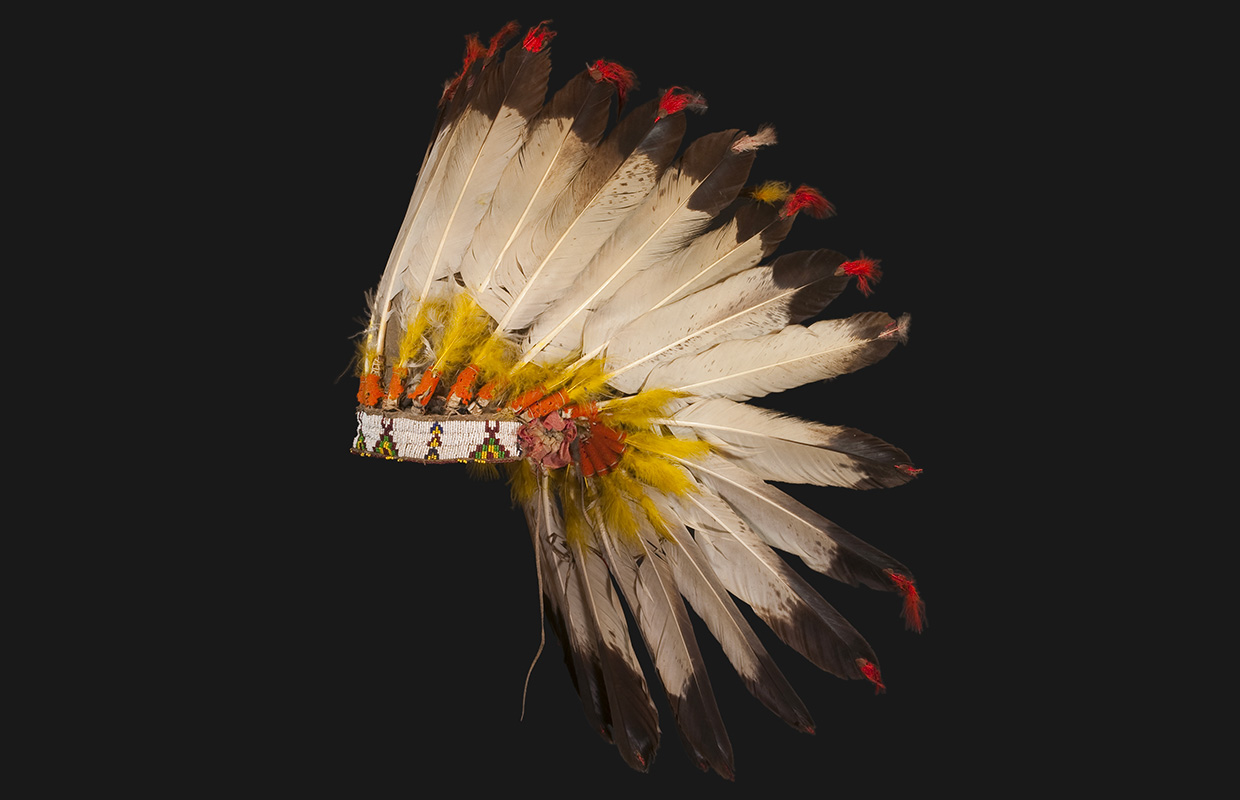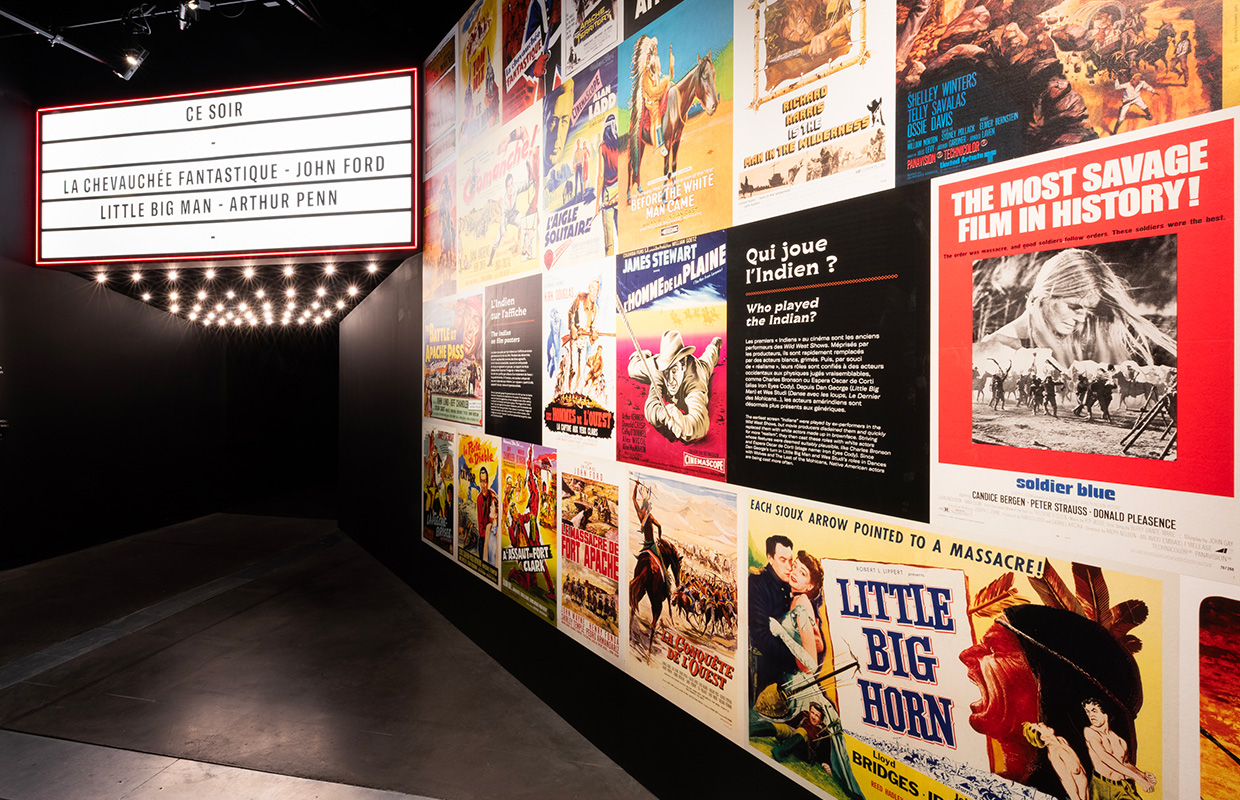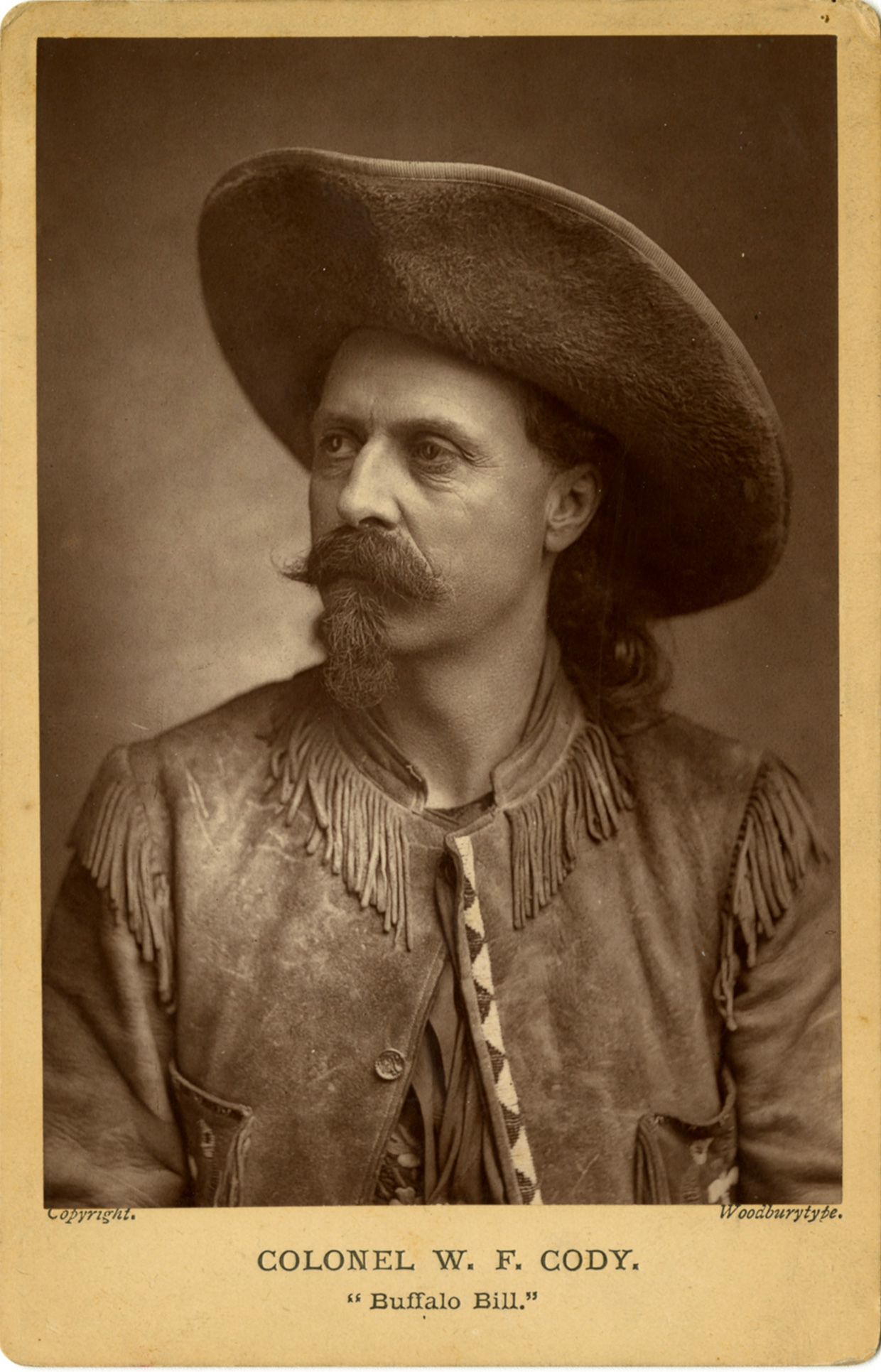
The exhibition “Sur la piste des Sioux” which opened at the Musée des Confluences in Lyon, takes us back to the origins of the limited and blinkered representation of the “American Indian” in Europe and France, and challenges many clichés .
Since 1990, November is Native American Heritage Month, here is the good time to see this exhibition that also explores the richness of Native American cultures. And since it's on for the rest of the school year, there's plenty of time to plan a project around it. For example, in connection with Shine Bright LLCER File 19 Modern Western.

Tepees, feathers, bison, peace pipes, arrows, headdresses... These are some of the images that immediately spring in our mind when we think about “American Indians”.
But these symbols do not represent all the nations that lived in the northern half of the American continent prior to colonisation.
Through travel diaries, paintings, novels, Wild West shows, advertisements and films, the exhibition invites visitors to look back at the long process of construction of this iconography.
The European representation of the “Indian” was gradually dominated by the Sioux, to the point that they alone embodied the “American Indian”. Even if the Sioux that we picture in France is an imaginary Sioux, with extremely reductive attributes.


"We have a very reductive image of Indians which corresponds to the image of Sioux but which does not represent all of the native North American populations," states the exhibition's project manager, Yoann Cormier.

The immersive and chronological exhibition space begins with the symbolic images of a plains bison and a tepee, and goes on to present the first contact made with Indian peoples in the sixteenth century and on to the golden age of the Western and notably the Buffalo Bill's Wild West show that travelled through the world from 1883 to 1913 and spread a folklore of the American West which are now part of the collective imagination. Everybody knows the Indians who dress themselves with feathers and who beat themselves on the mouth while dancing and the cowboys who wear stetsons and fringes.


Buffalo Bill Wild West Show
For Walter Littlemoon, a descendant of a Lakota family who took part in the Buffalo Bill European tour of the shows at the beginning of the 20th century, "Hollywood hurt us tremendously because what they wanted was to do 'money".

"Today, in the United States, we are nearly 547 Indian tribes and we all speak different languages (...) Hollywood has never considered us as individuals or small groups of individuals, but rather as a great set, "the old man with long hair adds in front of reporters.
The atmosphere of these Wild West Shows is recreated in a spectacular scenography where the finery and clothing from the collection of Belgian François Chladiuk, a lover of the American West, are highlighted.
The exhibition re-establishes the truth and brings a little bit of justice to peoples that have all too often been used and mistreated.
The exhibition is visible until 28/08/2022
between 10.30 am and 6.30 pm
except on January 1st and December 25th.
Closed on Monday.
Musée des Confluences 86 quai Perrache - 69002 Lyon 2ème

Native American Heritage Month
As defined by the NCAI – National Congress of American Indians – November is Native American Heritage Month, or as it is commonly referred to, American Indian and Alaska Native Heritage Month.
Since 1990, this month is a time to celebrate rich and diverse cultures, traditions, and histories and to acknowledge the important contributions of Native people. Heritage Month is also an opportune time to educate the general public about tribes, to raise a general awareness about the unique challenges Native people have faced both historically and in the present, and the ways in which tribal citizens have worked to conquer these challenges.
> A Native American View of Thanksgiving
Tag(s) : "American West" "Buffalo Bill" "cowboys" "Indians" "Lyon" "Native American" "U.S.A." "United State" "western"






